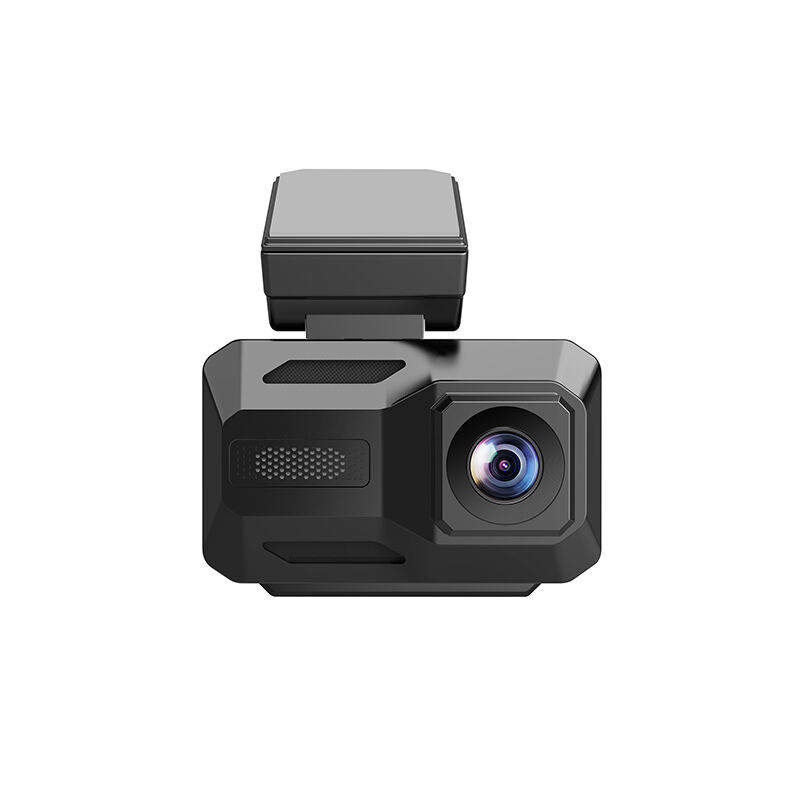Understanding Real-Time Hazard Detection
Advanced driver assistance is transforming how we think about on-road awareness. ADAS Dashcams combine continuous video recording with real-time alerting to help drivers detect hazards earlier and respond more effectively. By merging camera feeds, sensor data, and intelligent algorithms, ADAS Dashcams provide actionable warnings while preserving high-quality footage for later review. This blend of proactive assistance and reliable recording turns a simple dashcam into an active safety partner that complements driver attention on every trip.
Core Components of ADAS Dashcams
Camera Hardware and Optics
High-quality image sensors and well-designed lenses are foundational. ADAS Dashcams rely on cameras that deliver clear footage in a wide range of lighting conditions, from bright sunlight to low-light evenings. Wide dynamic range and adequate resolution ensure that license plates, road signs, and pedestrians are recorded with clarity. Robust optics also help reduce distortion, which improves the accuracy of subsequent detection algorithms.
Processing Units and AI Algorithms
Fast processors and specialized AI modules handle object detection, lane recognition, and threat assessment. ADAS Dashcams use machine learning models trained on vast datasets to recognize vehicles, pedestrians, cyclists, and road markings. These algorithms evaluate scenes frame by frame and generate timely alerts when potential risks are detected. Continuous firmware updates often improve detection accuracy and reduce false positives over time.
How Sensor Fusion Improves Detection
Integrating GPS and IMU Data
Combining camera input with GPS coordinates and inertial measurement unit (IMU) data enhances reliability. GPS provides precise location and speed context, while accelerometers and gyroscopes measure sudden changes in motion. ADAS Dashcams use this fused data to confirm whether a visual cue correlates with a real-world event, such as a hard brake or side impact. This cross-validation reduces the chance of spurious alerts and helps the dashcam prioritize significant incidents for recording.
Leveraging External Sensors
Some advanced systems integrate radar or lidar inputs to complement vision-based detection. While not all ADAS Dashcams include radar, those that do can better estimate object distance and relative speed, especially in low-visibility scenarios. Sensor fusion is particularly valuable when road markings are faded or weather conditions degrade camera performance—under these circumstances, additional sensor data helps maintain consistent detection.

Computer Vision Techniques in ADAS Dashcams
Object Detection and Classification
Modern ADAS Dashcams run object detection networks that classify objects on the road, from other vehicles to pedestrians and bicycles. These networks output bounding boxes and confidence scores, enabling the dashcam to assess which items pose immediate risk. By categorizing objects and tracking their trajectories, ADAS Dashcams can distinguish between a stationary parked vehicle and an oncoming threat that requires an alert.
Lane Detection and Path Prediction
Lane detection algorithms identify lane boundaries, road edges, and curbs to track vehicle position relative to the lane. ADAS Dashcams often project a predicted path based on current steering input and vehicle dynamics. When the predicted path crosses a lane boundary without signaling, the dashcam can announce a lane departure alert to prompt corrective action. Accurate lane tracking is critical for road hazard detection because it provides a spatial frame of reference for other objects.
Real-Time Processing Strategies
Edge Computing for Immediate Alerts
Processing data on the device, rather than relying on cloud latency, is essential for real-time hazard detection. ADAS Dashcams that use edge computing can analyze frames within milliseconds and generate instant alerts. This low-latency processing is crucial when drivers need to react within fractions of a second to avoid collisions. On-device inference also preserves privacy since sensitive video does not need to be transmitted continuously to remote servers.
Efficient Algorithms for Low-Power Operation
To run continuously and reliably, ADAS Dashcams implement efficient neural networks and optimized code paths that minimize CPU load and power consumption. These efficiencies allow the device to maintain accurate detection while avoiding overheating or excessive battery draw. Properly engineered models strike a balance between detection fidelity and practical power constraints.
Alerting and Human-Machine Interaction
Designing Clear, Timely Alerts
An alert is only useful if the driver understands it and can respond appropriately. ADAS Dashcams present warnings in ways that avoid startling drivers while still conveying urgency. Visual indicators, gentle tones, and haptic feedback can be combined to create a layered alert system. By prioritizing readability and context-aware alerts, ADAS Dashcams help drivers make safer choices quickly.
Minimizing False Alarms
False alarms can reduce trust in any ADAS Dashcams system. To prevent alert fatigue, effective devices apply temporal smoothing, object confirmation, and confidence thresholds before issuing warnings. These strategies filter transient artifacts and focus the system on sustained risks, preserving driver trust and attention when it matters most.
Environmental and Edge Case Challenges
Handling Poor Lighting and Weather
Rain, fog, and glare complicate detection for vision-based ADAS Dashcams. Algorithms can compensate through exposure control, de-noising, and image enhancement, but performance can still degrade under extreme conditions. Manufacturers often provide recommended calibration and installation guidelines to mitigate these impacts and maintain reliable detection.
Dealing with Unstructured Roads and Construction Zones
Temporary lanes, construction signs, and unusual road layouts are frequent hazards that challenge fixed-rule systems. ADAS Dashcams trained on diverse datasets can better generalize in these situations, but human judgment remains crucial. Combining dashcam alerts with driver awareness creates the best defense against unpredictable roadway changes.
Data Logging and Evidence Preservation
Prioritizing Critical Clips
ADAS Dashcams tag and save clips based on impact, alert severity, and GPS context. This intelligent logging ensures the most relevant footage is retained and easy to access after an incident. When collisions occur, accident footage paired with alert metadata builds a robust evidentiary record for insurance and legal purposes.
Secure Storage and Data Integrity
Encryption and tamper-evident logs protect recorded video and associated telemetry. ADAS Dashcams that support secure hashing and authenticated timestamps make it harder for malicious actors to alter evidence. For fleets and individual owners alike, maintaining data integrity is essential when footage must stand up to scrutiny.
Power Management and Parking Mode Considerations
Continuous Monitoring while Parked
Many users expect ADAS Dashcams to offer parking mode protections that record impacts while the vehicle is off. Achieving this without draining the car battery requires intelligent power management. Low-power motion detection, buffered recording, and wake-on-impact strategies allow dashcams to preserve battery life while remaining responsive.
Hardwiring and External Battery Solutions
To enable robust parking monitoring, some owners hardwire ADAS Dashcams to a vehicle fuse box or use dedicated external battery packs. Properly configured setups allow extended monitoring periods and prevent battery depletion. Professional installation can help ensure the dashcam behaves predictably across both driving and parked states.
Privacy and Regulatory Issues
Understanding Local Laws on Recording
Regulations about video and audio recording vary widely. ADAS Dashcams users should be aware of local rules related to capturing images of people and recording audio. Choosing devices that provide configurable privacy options, such as disabling microphones or masking faces, can reduce legal risks and enhance compliance.
Data Retention Policies
How long should footage be kept? ADAS Dashcams often implement configurable retention windows, allowing users to balance storage constraints with evidence preservation. For fleet operators, defined retention policies help manage storage costs and comply with privacy expectations.
Integration with Telematics and Fleet Management
Centralized Monitoring and Analytics
Fleet managers integrate ADAS Dashcams with telematics platforms to gain visibility into driving behavior and incident trends. Aggregated alerts and video analytics help identify training opportunities and high-risk routes. When ADAS Dashcams feed into a broader management stack, they become a proactive tool for reducing accidents and operational downtime.
Driver Coaching and Performance Metrics
Beyond incident recording, ADAS Dashcams provide data that supports coaching: instances of harsh braking, risky lane changes, or near-misses can be reviewed and addressed. Regular feedback loops informed by dashcam analytics lead to measurable improvements in fleet safety performance.
Installation and Calibration Best Practices
Optimal Mounting Locations
Where the dashcam sits on the windshield affects detection accuracy. Placing the camera where it has a clear view of the lane ahead, unobstructed by tint strips or steering columns, helps lane and object detection perform optimally. Consistent mounting procedures simplify calibration across multiple vehicles.
Calibration and Software Setup
Calibration aligns the visual field with vehicle dynamics and ensures lane detection references are accurate. Many ADAS Dashcams offer guided setup routines via mobile apps to streamline calibration. Periodic recalibration after windshield replacement or significant changes in vehicle trim preserves detection fidelity.
User Experience and Human Factors
Encouraging Trust and Adoption
How do drivers learn to rely on ADAS Dashcams without becoming complacent? Clear user education on system limits and recommended responses builds healthy trust. Short in-app tutorials and real-world examples help drivers understand when to heed alerts and when to rely on their own judgment.
Balancing Alerts and Autonomy
ADAS Dashcams are assistants, not substitutes for attentive driving. Messaging that emphasizes augmentation over automation helps maintain driver engagement. By designing systems that empower rather than override driver decisions, manufacturers ensure technology complements safe driving habits.
Future Directions and Innovations
Edge AI Improvements
Ongoing improvements in on-device AI models will make ADAS Dashcams smarter and more energy efficient. Smaller, faster neural networks enable more sophisticated scene analysis without requiring cloud resources. As edge AI advances, expect better detection of subtle hazards like small animals or debris.
Cooperative Systems and V2X Potential
Looking ahead, ADAS Dashcams may integrate data from vehicle-to-everything (V2X) networks to receive warnings from infrastructure and other vehicles. When combined with local perception, these cooperative systems could anticipate hazards beyond the line of sight and offer earlier warnings.
Practical Buying Guide
Selecting the Right Features
When choosing a device, prioritize reliable ADAS Dashcams models that balance detection quality, video clarity, and software support. Key features to evaluate include low-light performance, sensor fusion capability, firmware update policies, parking mode power management, and secure data handling.
Warranty and Support Considerations
Support and warranty coverage can influence long-term satisfaction. Choose vendors that offer clear update policies and responsive customer support. A robust support ecosystem ensures the ADAS Dashcams remain up-to-date and reliable throughout their service life.
Testing, Validation, and Real-World Benchmarks
Benchmarking Performance
Controlled testing and real-world validation ensure ADAS Dashcams perform as advertised. Benchmarks include obstacle detection rates, false positive frequency, and reaction latency under varying speeds and lighting conditions. Fleet operators and independent testers often measure near-miss detection and correlate it with human intervention metrics to determine practical effectiveness.
Validation Approaches
How are these devices validated for reliability? Manufacturers combine synthetic datasets with on-road trials to tune models, and many perform cross-environment validation to ensure generalization. Transparent test reports and repeatable procedures give buyers confidence that ADAS Dashcams will behave consistently across diverse driving environments.
FAQ
What is the primary function of ADAS Dashcams?
ADAS Dashcams combine continuous video recording with active driver alerts to detect and warn about road hazards in real time.
Do ADAS Dashcams need internet to operate?
No, many ADAS Dashcams perform detection and alerting locally without internet; connectivity is optional for cloud backup and remote monitoring.
How accurate are ADAS Dashcams in bad weather?
Accuracy varies; ADAS Dashcams with sensor fusion and adaptive algorithms handle adverse conditions better, but extreme weather can still limit performance.
Can ADAS Dashcams replace attentive driving?
ADAS Dashcams assist drivers but do not replace human attention; they are designed to augment awareness rather than automate driving.
Table of Contents
- Understanding Real-Time Hazard Detection
- Core Components of ADAS Dashcams
- How Sensor Fusion Improves Detection
- Computer Vision Techniques in ADAS Dashcams
- Real-Time Processing Strategies
- Alerting and Human-Machine Interaction
- Environmental and Edge Case Challenges
- Data Logging and Evidence Preservation
- Power Management and Parking Mode Considerations
- Privacy and Regulatory Issues
- Integration with Telematics and Fleet Management
- Installation and Calibration Best Practices
- User Experience and Human Factors
- Future Directions and Innovations
- Practical Buying Guide
- Testing, Validation, and Real-World Benchmarks
- FAQ



